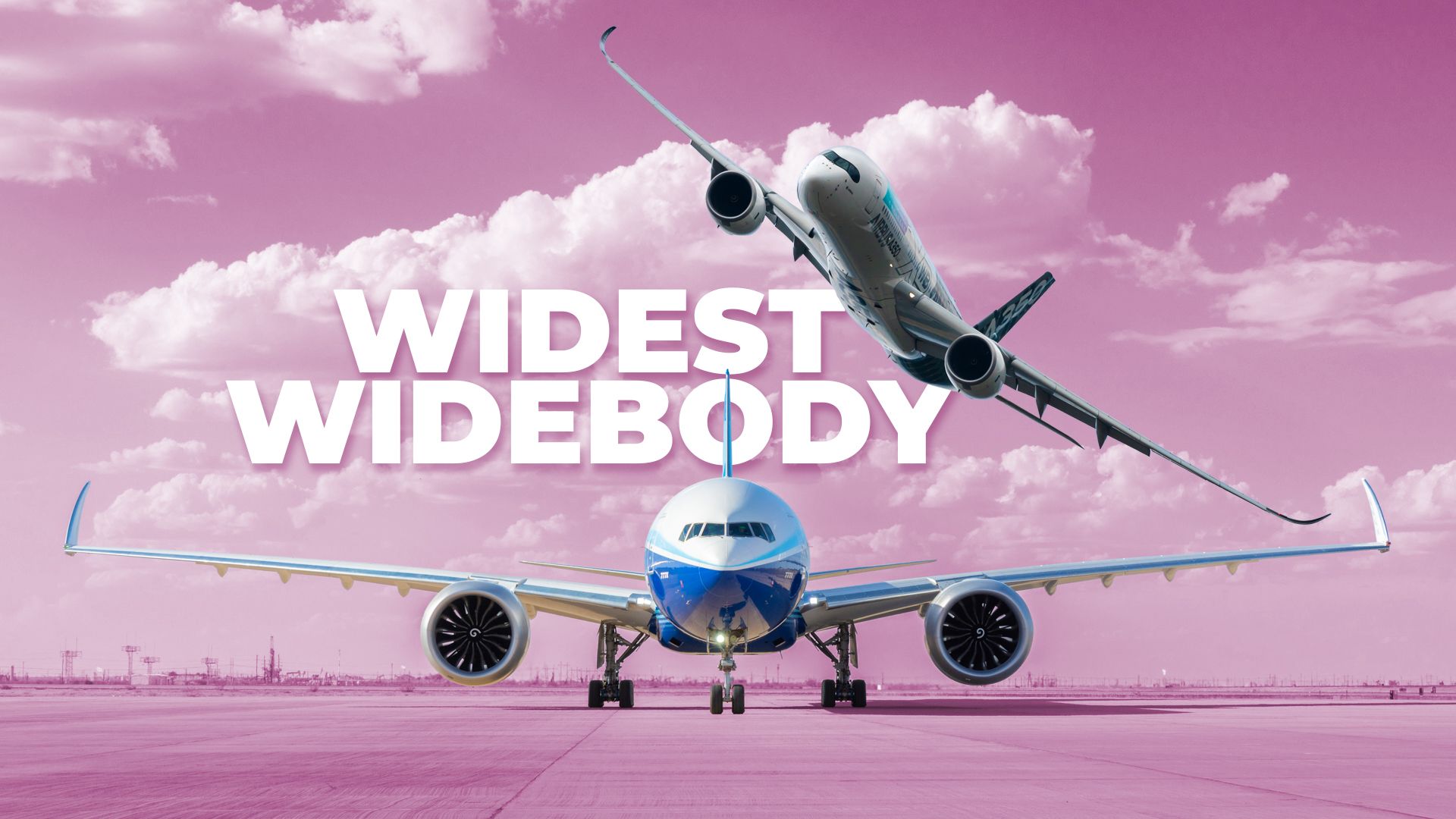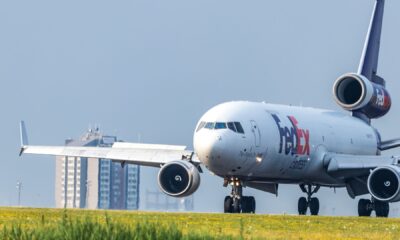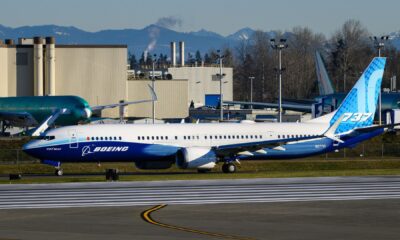World
Boeing Challenges Airbus with Innovative 777X Widebody Design

Boeing has redefined the competitive landscape in the aviation industry with its latest widebody aircraft, the 777X, posing a significant challenge to Airbus’s longstanding dominance with the A350. While Airbus has marketed the A350 as the XWB (eXtra Wide Body) for nearly a decade, Boeing’s new offering promises enhanced passenger comfort and cabin space, potentially reshaping airline strategies for long-haul travel.
The 777X features a cabin that is four inches wider than the already spacious 777-300ER. This increase in width allows airlines the flexibility to offer wider economy seats, improved premium economy configurations, and more comfortable business class arrangements. For passengers, these small but significant changes can lead to a noticeably more enjoyable flying experience, especially on long-haul flights that can last up to 17 hours.
With over 350 firm orders already secured from major airlines, including Emirates, Lufthansa, and Qatar Airways, the 777X has quickly garnered considerable market interest. This strong reception contrasts with the A350’s impressive global footprint, which includes over 570 aircraft delivered to more than 40 airlines worldwide. Consequently, the competition between these two aircraft models has evolved to encompass not just cabin design, but also the scale of their adoption across the globe.
Revolutionizing Passenger Experience
Boeing has focused on creating a modern passenger experience that rivals the A350. To achieve this, the company collaborated with design consultancy Teague to reimagine the aircraft’s cabin. The result is a series of innovative features aimed at alleviating stress and fatigue during long flights.
One notable improvement is the size and placement of windows. The 777X features larger windows—measuring 162 square inches each—compared to the A350’s 125 square inches. This design ensures that even passengers in middle seats have a clear view outside, enhancing their onboard experience. Moreover, the cabin lighting has been upgraded with a new LED system that simulates different phases of daylight, helping passengers adjust to new time zones and reducing the effects of jet lag.
Enhanced Cabin Design and Features
Boeing’s decision to widen the 777X cabin has significant implications for seating arrangements. Traditionally, Airbus promoted nine-abreast seating in its economy cabins, while the previous 777 models often accommodated ten-abreast seating, leading to customer complaints about cramped conditions. The 777X can now offer ten-abreast seating more comfortably, allowing airlines to market it as equally or even more comfortable than the A350 for long-haul routes.
In addition to enhanced comfort, the 777X aims to resolve common passenger frustrations, particularly regarding overhead storage. Each overhead compartment is designed to hold up to four standard roller bags, effectively doubling the storage capacity compared to previous models. This design reduces boarding time and alleviates stress for passengers searching for space for their bags.
Furthermore, the aircraft’s lighting system is intricately linked to its scheduling, gradually adjusting from warm sunrise tones to cooler daylight hues and finally to dim evening shades. This thoughtful feature not only enhances the aesthetic appeal of the cabin but also supports passengers’ circadian rhythms during ultra-long-haul flights.
As the competition in the widebody market intensifies, the 777X demonstrates how small design changes can significantly impact market perceptions. While Airbus continues to refine its A350, Boeing’s innovative approach with the 777X has shifted the focus towards passenger experience, marking a new era in widebody aircraft design.
With both companies striving to outdo one another, the future of air travel looks promising for passengers. As Boeing and Airbus continue to innovate, travelers stand to benefit from wider seats, quieter cabins, and an overall improved flying experience. The ongoing rivalry between these aviation giants ensures that the cabins of the future will be increasingly tailored to meet the needs and expectations of passengers worldwide.
-

 Politics4 weeks ago
Politics4 weeks agoSecwepemc First Nation Seeks Aboriginal Title Over Kamloops Area
-

 World5 months ago
World5 months agoScientists Unearth Ancient Antarctic Ice to Unlock Climate Secrets
-

 Entertainment5 months ago
Entertainment5 months agoTrump and McCormick to Announce $70 Billion Energy Investments
-

 Science5 months ago
Science5 months agoFour Astronauts Return to Earth After International Space Station Mission
-

 Lifestyle5 months ago
Lifestyle5 months agoTransLink Launches Food Truck Program to Boost Revenue in Vancouver
-

 Technology3 months ago
Technology3 months agoApple Notes Enhances Functionality with Markdown Support in macOS 26
-

 Lifestyle3 months ago
Lifestyle3 months agoManitoba’s Burger Champion Shines Again Amid Dining Innovations
-

 Top Stories2 months ago
Top Stories2 months agoUrgent Update: Fatal Crash on Highway 99 Claims Life of Pitt Meadows Man
-

 Politics4 months ago
Politics4 months agoUkrainian Tennis Star Elina Svitolina Faces Death Threats Online
-

 Sports5 months ago
Sports5 months agoSearch Underway for Missing Hunter Amid Hokkaido Bear Emergency
-

 Politics5 months ago
Politics5 months agoCarney Engages First Nations Leaders at Development Law Summit
-

 Technology5 months ago
Technology5 months agoFrosthaven Launches Early Access on July 31, 2025





















